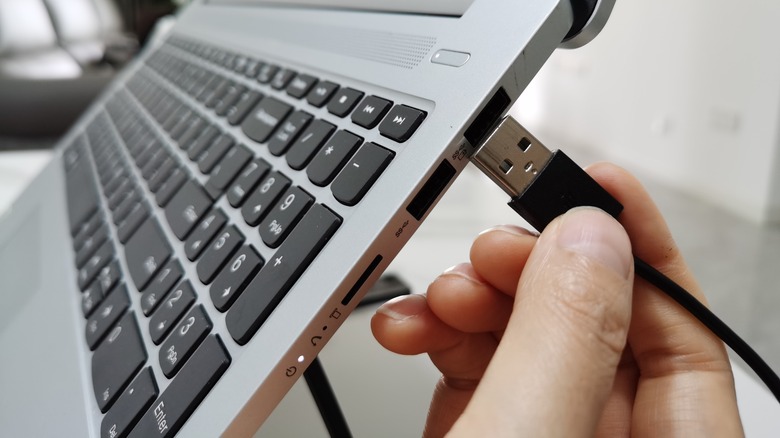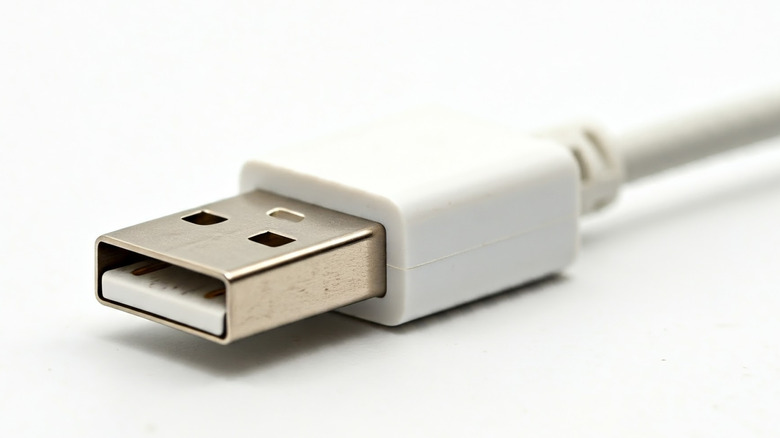
If there’s one experience binding tech users together, it’s trying to plug in a USB cable or device. Somehow, it’s never oriented correctly the first time, and after the panic of realizing you’ve been trying to shove it in the wrong way, you frustratedly flip it over. Often enough, you mess up the second try, too. Whether you’re a computer novice or work with technology for a living, we’ve all made this mistake more times than we care to think about.
The frustration over USB orientation is so universal that the USB-IF, the consortium overseeing USB standards, made sure the new USB Type-C connector was reversible. That’s well and good for devices that only use USB-C, but plenty of computers, flash drives, and other useful USB gadgets still use the rectangular Type-A connection.
However, there’s a simple trick that will make it far easier to avoid accidentally plugging your USB devices upside-down. Each USB Type-A connector uses the same design, so all you need to do to orient yourself is look at the plastic tab inside the connector. In many cases, the other side of the connector will be the one facing up.
Often, the USB port and the device you’re plugging in will be two different colors, but don’t worry. The colors indicate different capabilities (for example, fast charging for green USB ports), but it’s safe to mix USB devices regardless of the color of their ports.
>>>A16-018N1A Charger for Asus Transformer Book T100chi
Look for plastic tabs and square holes on your USB connector

Every USB connector uses the same design; it’s not called a Universal Serial Bus for no reason! You can use those consistent characteristics to properly align the connector of any USB Type-A device every single time. As mentioned above, the main indicator to look for is the flat plastic tab inside the male connector. This portion of the connector houses the contacts of the USB. It takes up roughly half of the inside of the connector. Every female USB port has a corresponding plastic piece housing its contacts, which slots into the male connector when you plug it in. The USB connection occurs when those two sets of contacts touch one another. In other words, the plastic tab in the male connector should always be oriented in the opposite direction of the plastic tab in the female connector.
Another rule of thumb is that laptop USB ports typically have their plastic tabs facing upwards. This means you can simply flip the connector so the plastic tab is at the bottom. On other devices, such as desktop computers, it’s worth checking the connector first before orienting the cable the other way around.
>>>USB-1761-CBL-PM02 Charger for Allen Bradley Programming PLC Cable Micrologix 1000 Series
Another good way to know which side the plastic tab is on is to look for two small, square holes in the metal. If they’re hollow, the plastic is on the other side. Lastly, there’s always a jagged seam running lengthwise along the bottom of the connector. It’s always on the same side as the plastic tab, giving you yet another landmark by which to orient your connector.